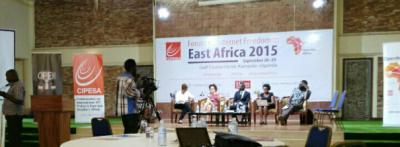 On the 28 and 29 September 2015, CIPESA held its eighth Forum on Internet Freedom in East Africa. One of the panel discussions, ‘Violence Against Women Online’ got me thinking on how ‘violence against women online’ can be handled to promote a more gender inclusive and perhaps a more gender sensitive internet – one where women can freely share and participate in the virtual space. Most discussions such as this tend to focus on how women can ‘behave’ in a more ‘tolerable manner’ online such as uploading modest pictures.
On the 28 and 29 September 2015, CIPESA held its eighth Forum on Internet Freedom in East Africa. One of the panel discussions, ‘Violence Against Women Online’ got me thinking on how ‘violence against women online’ can be handled to promote a more gender inclusive and perhaps a more gender sensitive internet – one where women can freely share and participate in the virtual space. Most discussions such as this tend to focus on how women can ‘behave’ in a more ‘tolerable manner’ online such as uploading modest pictures.
The discussion kicked off in high gear by defining online violence as any form of abuse or threat that affects internet users online. The effects can range from fear to use the internet or fear to use the internet and various online platforms freely. Having such a broad definition expands the law as conventionally known on the physical space to cover the internet. However, one of the things we often forget about is the impact of the internet on women who are not users, this applies similarly to anyone who does not use the internet but is affected by it. What happens to such people? What mechanisms have we put in place for them? The question is what do we do about the non users? They too have rights. I recall the scenario of a girl, who even though she clearly hadn’t invited online abuse she suffered humiliation by having her revealing pictures shared multiple times online.
Read the full Feminist Talk in GenderIT.org .